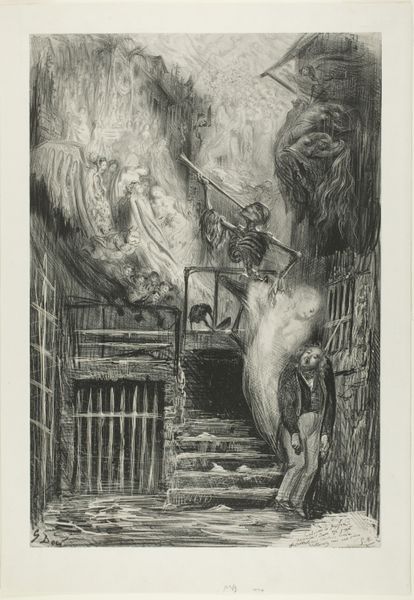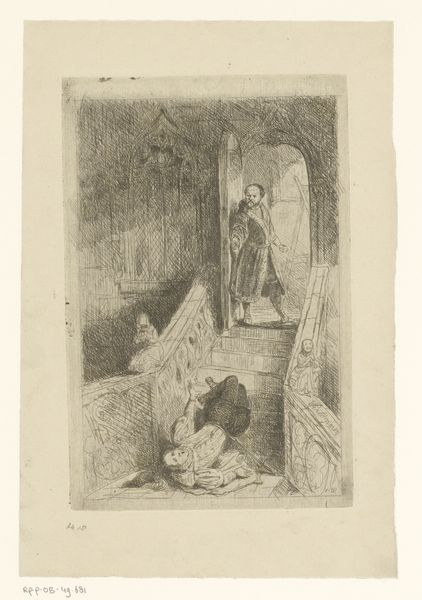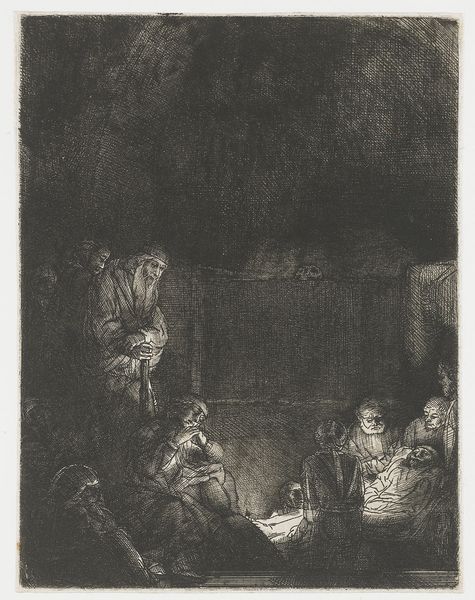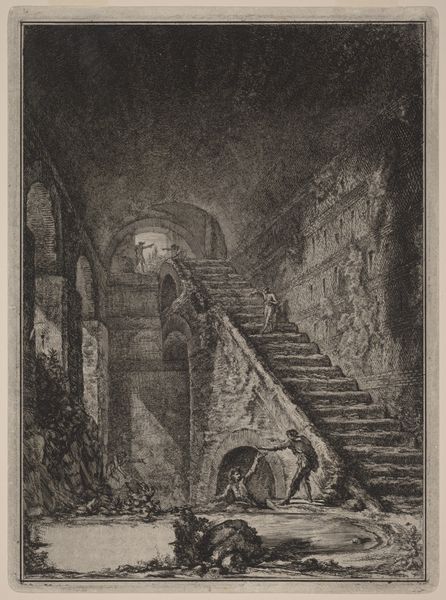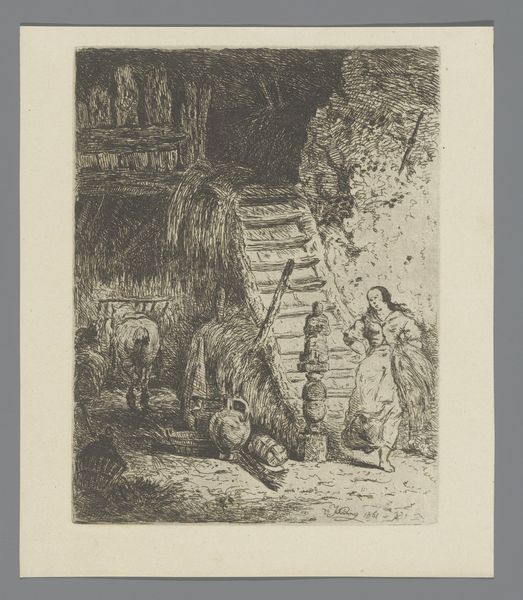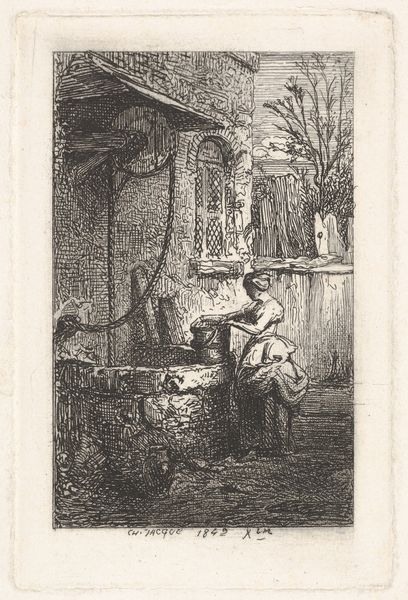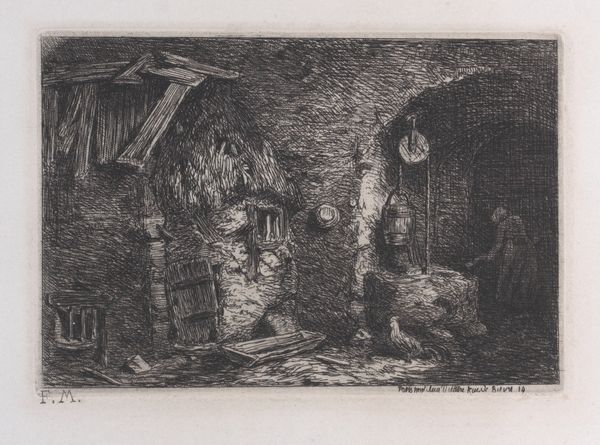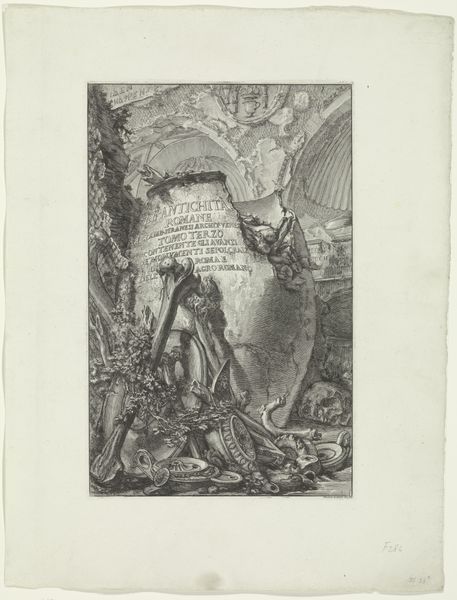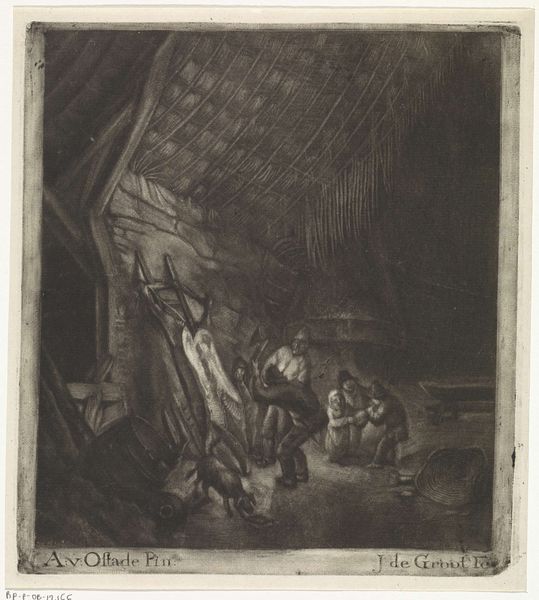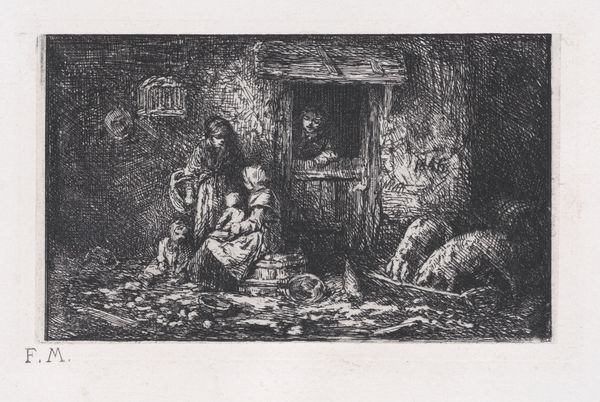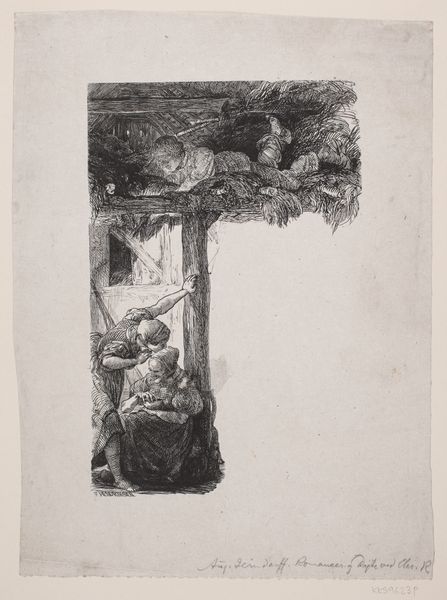
Street of the Old Lantern (Death of Gérard de Nerval) 1855
0:00
0:00
Dimensions: 19 7/8 x 13 3/4 in. (50.48 x 34.93 cm) (image)
Copyright: Public Domain
Editor: Here we have Gustave Doré’s lithograph, "Street of the Old Lantern (Death of Gérard de Nerval)," created in 1855. It's overwhelmingly eerie, filled with gothic architecture, a hanging figure, and ghostly apparitions. How would you interpret the societal context surrounding this grim portrayal? Curator: Considering the socio-political climate of mid-19th century Paris, marked by rapid urbanization, industrialization, and social upheaval, Doré’s lithograph becomes incredibly potent. How does the artist portray a sense of urban decay, in your opinion? Editor: The dark, claustrophobic alleyway definitely conveys a sense of decay. It contrasts sharply with the romantic ideals prevalent in art at the time. Curator: Precisely. Doré subverts those ideals, highlighting the grim realities of poverty, despair, and the alienation that Nerval, and perhaps Doré himself, felt amidst societal shifts. Notice the skeletal figure with the trumpet overlooking the scene. What role does this figure play? Editor: I’d guess it’s a symbolic representation of death, but it’s in such an imposing position that I can't help but think it represents an imposition of the elites and the systemic power of life and death at the time. Curator: That's an astute reading, particularly considering the burgeoning power structures of the era. It underscores the inherent tension between the Romantic yearning for the sublime and the harsh socio-political realities on the ground. The print, accessible to a wide audience, becomes a stark social commentary, reflecting anxieties about progress and its human cost. Editor: Understanding that historical backdrop really sheds new light on what I originally thought was a purely symbolic image! Thank you for contextualizing Dore's piece within its broader cultural implications. Curator: My pleasure. Reflecting on these intersections between art, society, and historical context truly enriches our understanding and expands how we interact with a work like this.
Comments
minneapolisinstituteofart almost 2 years ago
⋮
Here Gustave Doré reinvents the notion of the apotheosis as Death elevates the rather eccentric poet Gérard de Nerval into the spirit world. Even among his bohemian friends, De Nerval's attachment to his pet lobster was considered unusual. His Romantic preference for the spectral is manifest in his statement that "This life is a hovel and a place of ill-repute. I'm ashamed that God should see me here." He was much beloved in artistic circles, but suffered periodic insanity and fell into poverty. On the night of January, 26, 1855, he hanged himself from a window grate.
Join the conversation
Join millions of artists and users on Artera today and experience the ultimate creative platform.
